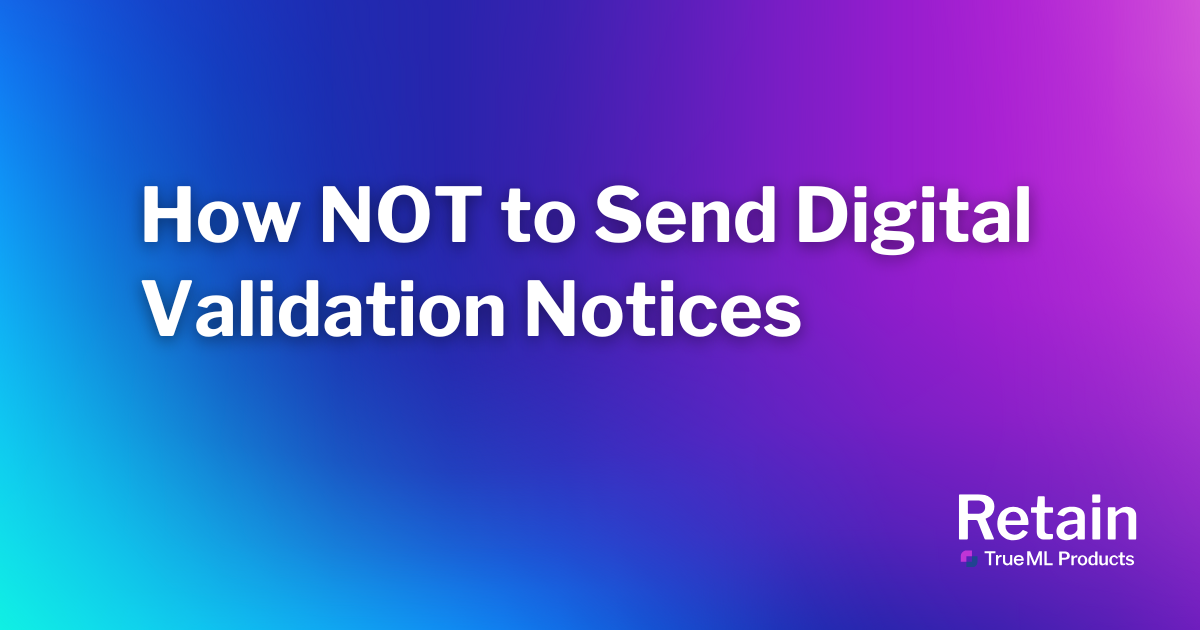Switching from physical letters to digital notifications will significantly reduce paper and postage costs for law firms and businesses required to send Initial Demand Letter (IDL) or validation notice to recovering delinquent funds—but it’s not as easy as copying the sample model validation notice in an email.
While, yes, organizations can send these validation notices via email and still be fully compliant, there are several other common questions that are important to cover for your business or law firm to confidently make the transition to sending this required communication electronically.
Let’s look at some of the frequently asked questions about sending electronic validation notices (EVNs), starting with one we already briefly touched on:
Can a debt collector send the Model Validation Notice by email?
Yes!
- If delivering MVN electronically:
- Prompts may be displayed electronically or as a fillable field
- Hyperlinks may be embedded so that when clicked, they connect to the debt collector’s/CFPB’s website
- Best practice is to permit a consumer to respond to the dispute information prompts via hyperlink
- Easy way to opt-out provided, such as an opt-out hyperlink
- Electronic Formatting Considerations:
- Viewed by computer
- Viewed by cell phone
What are some of the consent requirements in Regulation F?
- E-Sign consent is not required when the validation notice is the initial communication and it is delivered by email
- Any time an initial communication does not contain the validation notice, you must obtain E-Sign consent when sending the validation notice electronically within 5 days of the initial communication
- Any time a consumer requests the verification and/or name and address of the original creditor, you must obtain E-Sign consent to send the information electronically
What is the Regulation F Email Safe Harbor?
A defense to an unauthorized third-party disclosure claim.
- Debt collector obtains email directly from consumer
- Creditor got email from consumer, used it to email without opt-out, sends warm transfer opt-out, no opt-out in 35 days, and email address has public domain name.
- Prior collector got email from consumer, or from opt-out in #2.
“Nothing in the [safe harbor] section prohibits a debt collector from sending an email to an email address provided by the consumer to the creditor. Depending on the facts, a debt collector may be able to do so without violating FDCPA section 805(b).”
Are there any other special requirements to send required disclosures electronically?
To send required disclosures electronically, you must do so in a manner that is reasonably expected to provide actual notice in a form the consumer may keep and access later.
- This includes three key things:
- Monitoring deliverability,
- Sending the email from your domain, and
- Including two pieces of account information in the subject line (information to help the consumer recognize the matter, but it cannot include amount of the debt).
What makes sending EVNs through Retain by TrueML Products so effective?
Retain is a scalable, client-branded digital delivery tool to help you manage and optimize customer engagement, automate your digital communications, and keep your headcount low. With Retain, you can seamlessly transition from traditional paper-based IDLs to sending compliant notices via email with multiple bottom-line benefits:
- Cost Reduction: Businesses can mitigate the financial burden associated with physical mailings by leveraging Retain’s digital platform.
- Automation: Retain automates the delivery process of EVNs, expediting consumer engagement and alleviating the need for manual interjections.
- Scalability: Accommodating organizations of all sizes, Retain’s scalable architecture offers a versatile solution tailored to individual needs in real time.
- Deliverability: With a deliverability rate of 87%, Retain can help ensure your EVNs make it to your recipients and give you the best chance at productive engagement in debt recovery.
In many cases, sending the validation notice electronically will more effectively encourage customers to pay the balance owed or at least set up a payment plan with you—studies have found that digital-first customers contacted digitally make 12% more payments than those contacted via traditional channels.
It’s Time to Stop Buying Stamps and Start Hitting “Send”
With Retain by TrueML Products, you can spend less by sending this first communication digitally, such as an Electronic Validation Notice, while automating the delivery process and engaging past-due customers more efficiently at scale.
Learn how to improve your communication with consumers in a digital channel that results in faster account resolution by scheduling a consultation here»»



